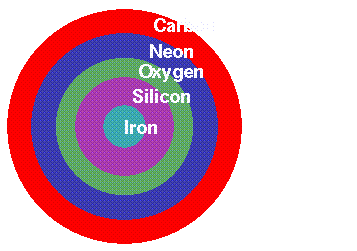
 How do the heavy elements produced in a massive star get mixed back into
the interstellar gas, where they can be used to form new generations of
stars and planets?
How do the heavy elements produced in a massive star get mixed back into
the interstellar gas, where they can be used to form new generations of
stars and planets?

The interior of a massive star is composed of layers of "ash" from several
stages of thermonuclear fusion, beginning with Hydrogen fusing into Helium,
and ending with Silicon fusing into Iron. When the central iron core implodes,
the subsequent explosion drives a blastwave outward through these layers
of heavy elements. The debris thrown out by the supernova explosion is
therefore composed of heavy elements previously fused together in the core
of the massive star.
Young supernova remnants like Cassiopeia A provide a glimpse of how these heavy elements from the core of a massive star get mixed back into the interstellar medium. By studying the dynamics, morphology, and composition of young supernova remnants, we hope to understand how much of which elements are created, and how they end up back in space.